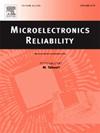Microstructure and mechanical evolution of sintered silver on Ni/Pd/Au and Ni/Au finished substrates
IF 1.6
4区 工程技术
Q3 ENGINEERING, ELECTRICAL & ELECTRONIC
引用次数: 0
Abstract
With the development of third-generation semiconductor materials, power devices are facing new challenges in high-temperature and high-power density packaging. Sintered silver, known for its high thermal conductivity, high electrical conductivity and high melting point, has become one of the most promising attachment materials. Meanwhile, gold-finished surface, with its excellent corrosion resistance and high stability characteristics, has become one of the most commonly used surface metallization in power devices. However, achieving high-strength bonding and ensuring high-temperature reliability in Ag-Au joints remains challenging due to severe unbalanced interdiffusion. Thus, it is crucial to investigate the performance and reliability, with a particular focus on the interconnect bonding mechanism, which requires further in-depth study.
In order to investigate the effect of the gold-finished surface on the Ag![]() Au interconnect mechanism, two Ag-Au interconnect joints are designed in this study based on the sintered silver pressureless interconnect process, using Ni/Au and Ni/Pd/Au finished copper substrates. The study found that the Pd layer promotes Au grain coarsening by comparing the connection strength and micro-interfacial morphology, resulting in an Au grain size four times larger than that of the Ni/Au plating. However, since the Pd/Au lattice mismatch is smaller than that of Ni/Au, Ag can diffuse through dislocations in the Ni/Pd/Au layer. The Pd layer increases the diffusion driving force by enhancing the concentration gradient, leading to a thicker and more continuous sintered dense layer. The oxidation of Ni results in delamination of the joints after a high-temperature aging test at 250 ℃, while the Pd layer can improve the reliability of the interconnect interface. Based on this phenomenon, a microstructure evolution model of Ag-Ni/Pd/Au interconnect joints is established to analyze the formation mechanism of the dense layer. Furthermore, the failure modes of interconnect joints between the two types of finished substrates and sintered silver were analyzed.
Au interconnect mechanism, two Ag-Au interconnect joints are designed in this study based on the sintered silver pressureless interconnect process, using Ni/Au and Ni/Pd/Au finished copper substrates. The study found that the Pd layer promotes Au grain coarsening by comparing the connection strength and micro-interfacial morphology, resulting in an Au grain size four times larger than that of the Ni/Au plating. However, since the Pd/Au lattice mismatch is smaller than that of Ni/Au, Ag can diffuse through dislocations in the Ni/Pd/Au layer. The Pd layer increases the diffusion driving force by enhancing the concentration gradient, leading to a thicker and more continuous sintered dense layer. The oxidation of Ni results in delamination of the joints after a high-temperature aging test at 250 ℃, while the Pd layer can improve the reliability of the interconnect interface. Based on this phenomenon, a microstructure evolution model of Ag-Ni/Pd/Au interconnect joints is established to analyze the formation mechanism of the dense layer. Furthermore, the failure modes of interconnect joints between the two types of finished substrates and sintered silver were analyzed.
求助全文
约1分钟内获得全文
求助全文
来源期刊

Microelectronics Reliability
工程技术-工程:电子与电气
CiteScore
3.30
自引率
12.50%
发文量
342
审稿时长
68 days
期刊介绍:
Microelectronics Reliability, is dedicated to disseminating the latest research results and related information on the reliability of microelectronic devices, circuits and systems, from materials, process and manufacturing, to design, testing and operation. The coverage of the journal includes the following topics: measurement, understanding and analysis; evaluation and prediction; modelling and simulation; methodologies and mitigation. Papers which combine reliability with other important areas of microelectronics engineering, such as design, fabrication, integration, testing, and field operation will also be welcome, and practical papers reporting case studies in the field and specific application domains are particularly encouraged.
Most accepted papers will be published as Research Papers, describing significant advances and completed work. Papers reviewing important developing topics of general interest may be accepted for publication as Review Papers. Urgent communications of a more preliminary nature and short reports on completed practical work of current interest may be considered for publication as Research Notes. All contributions are subject to peer review by leading experts in the field.
 求助内容:
求助内容: 应助结果提醒方式:
应助结果提醒方式:


